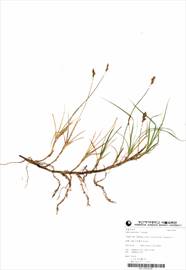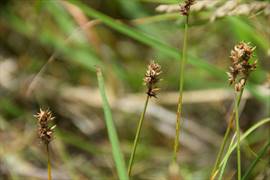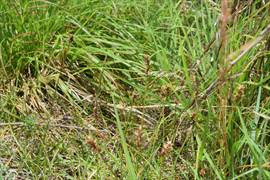Scientific Name
Carex arenicola F. Schmidt
Subgeneric Classification (Roalson et al. 2021)
| subgenus Vignea; Disticha-Chordorrhizae Clade; Disticha Clade |
Habitats
Occurs in Gangwon, and it lives in coastline or wetland.
Stem
Scattered growth, with basal sheath color light brown, and length about 20-30 cm.
Leaves
Leaves longer than the stem or similar to the stem, have glabrous surfaces, width about 1-2.5 mm.
Inflorescence
The number of spikes two or more. Spike shapes all same (no distinct differentiation between sexual characteristics), with some spikes bisexual. Spike sexuality androgynous (staminate flowers above the pistillate in the same spike). Entire inflorescence length about NaN cm (?), spikes arranged densely. Terminal spike sexuality androgynous. Lateral spike sexuality androgynous, and erect to ascend. Lateral spike length about 0.5-0.8 cm. Terminal spike length about 0.5-0.8 cm. Number of spikes per node one (one spike in one bract).
Bract
Lowermost bract shape scale-like.
Glume
Staminate glume awn absent or short (awn less than one-third of the total length). Pistillate glume awn absent or short (awn less than one-third of the total length). Pistillate glume color whitish green to light brown.
Perigynium
Transverse section lenticular to biconvex. Perigynium shape ovate-lanceolate (the broadest part near the base), and densely flowered. Perigynium glabrous or hairy or pubescent. Beak long (beak more than one-third of the total length), thick (the beak is not distinguished from the perigynium , and the starting point of the beak is more than one-third of the widest part of the perigynium), with truncate mouth. Length 3.5-4.5 mm.
Achene
Appendage absent, no constrictions.
Copyright © 2024. All rights reserved.



